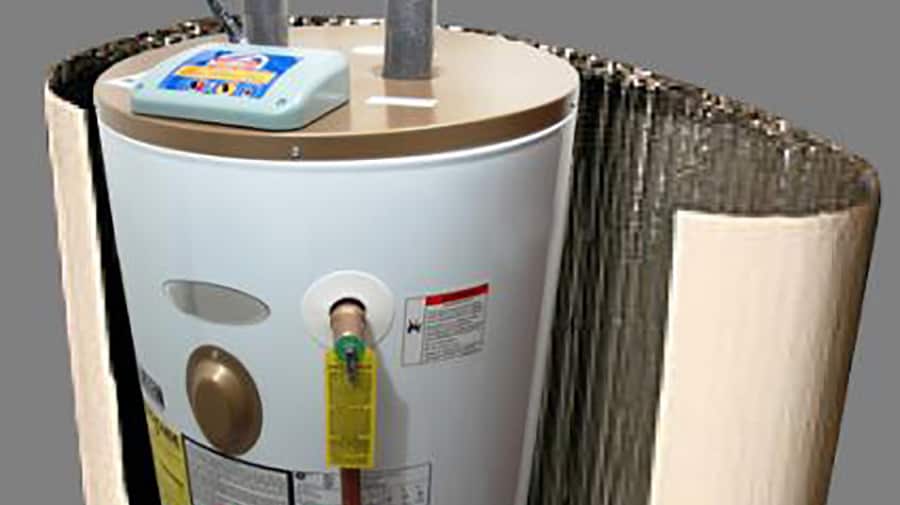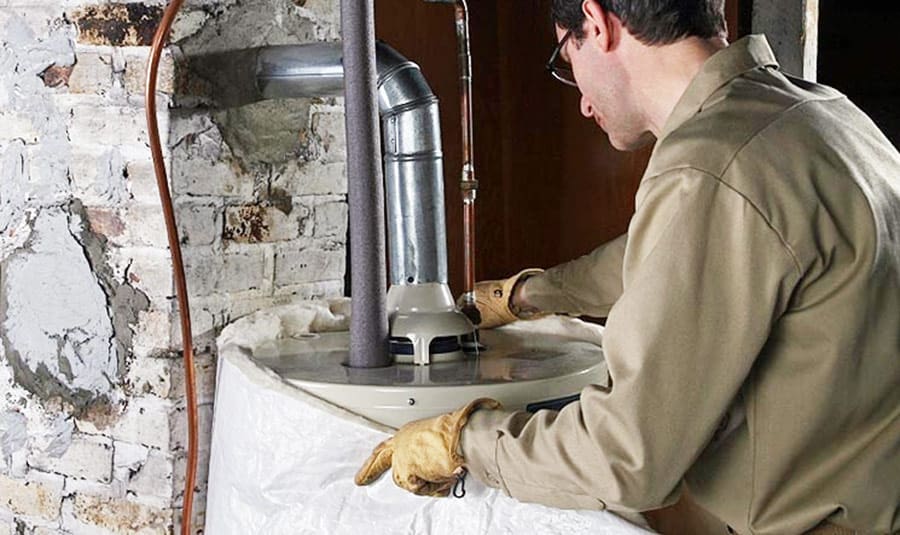
Water heater blankets have been around since the 1970s. They were designed to help conserve energy and reduce heating costs. They were used in many homes at this time and became a household staple.
But how effective were they? You may be asking yourself, ‘are water heater blankets worth the money’? Let’s find out.
Do water heater blankets save money? Water heater blankets can reduce energy loss by 25% to 45%! A water heater blanket is a good investment (saving you an average of 7% to 17%) and will pay for itself in the long run.
Those are fascinating statistics. This article will explain what a water heater blanket is and dive into those stats again. We will then look at how to install a water heater blanket and other ways to reduce water heating costs. Let’s get started.
What is a Water Heater Blanket?
Before we get into what exactly a water heater blanket is, let’s first examine water heaters and how they work. A water heater is a tank of water heated to a specific temperature, somewhere around 140 degrees Fahrenheit, on average.
When you turn on the hot water tap, the water being drawn from the tank is used and replaced with cold water. It requires a significant amount of energy to keep the water in the tank hot, regardless of whether it is being used. This energy is always escaping into the environment that surrounds the tank.
All water heaters are equipped with some insulation level to help keep the heat inside the tank—the newer the model, the better the insulation. Water heater blankets were marketed in the 1970s to help older heating units retain warmth and energy.
A water heater blanket (also known as an insulation blanket) is just what it sounds like! It is a blanket that wraps around a water heater to prevent heat loss and maintain an accurate, consistent temperature. It is made of sheet plastic, foil, or fiberglass and attached directly to the heating unit. They are easy to install, requiring only a few tools such as a tape measure and utility knife!
The average cost of a heating blanket is around $20 to $40. They are rated according to their ‘R’ value, just like other forms of insulation. The ones with the R-10 or R-11 rating are highly-recommended. Heating blankets are readily available at online retailers, such as Amazon.com, and (best of all) can be delivered right to your front door in as little as two days!
Are Water Heater Blankets Effective?
As mentioned above, water heater blankets lower energy bills by reducing standby heat loss anywhere from 25% to 45%. This can save you approximately 7% to 17% in heating costs! By this standard, the blanket has already paid for itself within a year of installation.
Not only do these blankets save energy and money, but they also keep the water at a consistently hot temperature. Investing in a water heater blanket is a good idea for homes with heating units 10 to 12 years old. After 12 years, however, it is recommended to replace the unit with a newer model.
Water heater blankets are not suited for hybrid water heaters that are typically installed indoors or inside garages.
Most water heater blankets can be cut to fit whatever water heater size you have.
Do You Need a Water Heater Blanket?
Water heater blankets are recommended for homes in frigid regions (central or northern provinces or states) if they are located outside the home (such as in a garage or an outdoor closet) or in an unfinished basement.
The greater the difference in temperature between the unit itself and the surrounding area, the more standby heat loss. This results in both wasted energy and higher heating bills.
Depending on the water heater’s age (12 years or older), it is sometimes better to replace it with a newer model that is likely to be more cost- and energy-efficient over time! If the water heater is around 8 to 12 years old and in good condition, try using a water heater blanket.
What is the Best Water Heater Blanket?
One of Amazon’s Choice picks for water heater blankets includes US Energy Products Water Heater Blanket Insulation Wrap. It fits 20 to 80-gallon tanks. It is lightweight (under 6 pounds) and features a superior 10R design, making it highly effective at saving energy. Easy to install, this blanket is durable and comes with an easy-to-follow instruction manual.
How to Install a Water Heater Blanket?

Installing a water heater blanket is easier than you may think. All you need are the following items:
- Water heater blanket
- Insulation tape
- Utility knife
- Dust mask
- Work gloves
- Black marker
There are eight simple steps to installing a water heater blanket, which includes the following:
Step One
Turn off your water heater. If you have an electric heater, then turn off the breaker. If you have a gas water heater, turn the gas valve to the pilot position.
Step Two
Clear the work area around the water heater, so you have room to work. Water heater blankets are large and require space to move for proper installation.
Step Three
Take the water heater blanket out of the package and lay it out on the floor. Put on your dusk mask (and protective eyewear, if possible) and gloves before you begin to avoid fiberglass irritation.
Step Four
Measure your water heater’s height and cut the blanket (with the utility knife) to fit accordingly, if necessary. The blanket should not extend past the top of the water heater, so do not wrap it over the edges. This could be a safety risk if the vent on the top of a gas unit is covered or blocked.
Step Five
Wrap the blanket around your water heater. You may need someone to help you at this point—Tape the blanket in place, for now.
Step Six
Feel around the blanket to find the areas where the controls are. Circle them with the black marker, remove the blanket, and cut them out with the utility knife. Electric water heaters have two panels on the tank’s side, whereas gas heaters have valves and a burner.
Be sure to cut the openings at least one inch wider than the controls. Don’t forget to mark the pressure relief valve and the pipe as well.
Step Seven
Put the blanket back onto the water heater, making sure the cut-out areas line up with the panels, valves, burners, and pipes. Tape the blanket permanently into place.
Step Eight
Once the blanket is taped into place, do a final inspection of the installation. Turn the water heater breaker back on. Keep in mind your water heater blanket will need to be removed for water heater maintenance or service.
What are Other Ways to Reduce Water Heating Costs?
In addition to a water heating blanket, other ways to reduce water heating costs in your home include:
- insulating the hot water pipes
- lowering the tank temperature to 120 degrees Fahrenheit
- installing timers that turn off your water heater at night
- installing low-flow faucets and showerheads
- taking shorter showers instead of baths
- placing basement or garage heaters on large Styrofoam pads
- washing clothes in cold water whenever possible
- investing in a new water heater every 10 to 12 years
- using your dishwasher only when full and on shorter wash cycles
- not letting the water run when you do dishes or wash your hands
- fixing faucet leaks immediately
- installing heat traps on your water heater
Conclusion
In conclusion, a water heater blanket (or insulation blanket) wraps around a water heater to prevent heat loss and maintain an accurate, consistent temperature. It is made of sheet plastic, foil, or fiberglass and attached directly to the heating unit. There is a variety to choose from online at Amazon.com.
Water heater blankets can reduce energy loss by 25% to 45%! This can save you approximately 7% to 17% in heating costs in a year, which is reasonably substantial. Based on this assumption, a water heater blanket will pay for itself!
They are recommended for homes with older heating units in extremely cold areas or if the unit is located in an unfinished basement or outside the home, such as in a garage or an outdoor closet.
Water heater blankets are cost-effective and energy-efficient. They are durable, easy to install, and readily available. Consider investing in one today. Not only is it good for your pocketbook but the environment as well. Good luck and shop smart!







